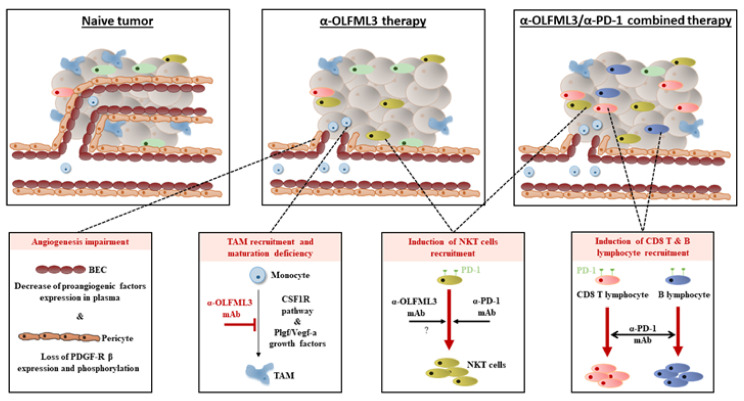Figure 7.
Proposed model illustrating the antitumor effect of anti-OLFML3 antibody treatment alone and in combination with anti-PD-1 checkpoint inhibitors. In naïve tumors, a high number of intratumoral blood vessels and pericytes are observed. Tumors are rich in tumor-associated macrophages but are poorly infiltrated by T, B, and NKT lymphocytes. Targeting of OLFML3 reduces the number of blood vessels, pericytes, and TAMs and increases the number of NKT cells. When combined with an anti-PD-1 checkpoint inhibitor, anti-OLFML3 treatment increases tumor infiltration by B lymphocytes and increases infiltration by NKT lymphocytes. Together, these effects inhibit tumor growth.

